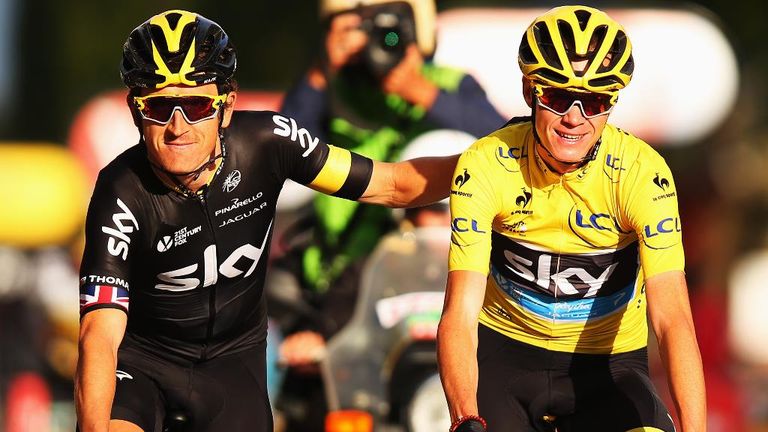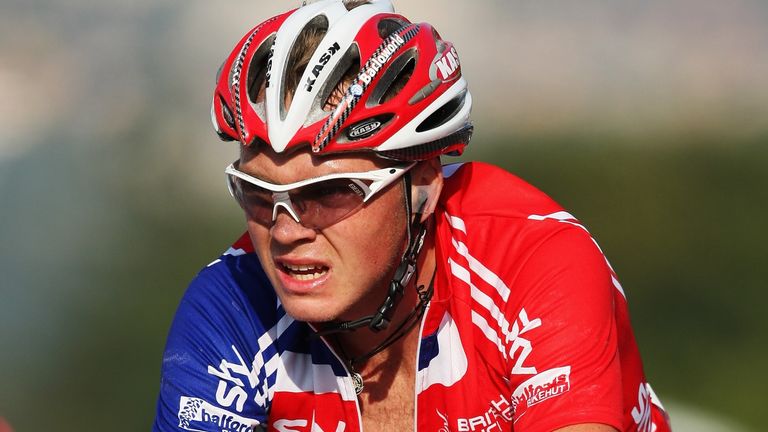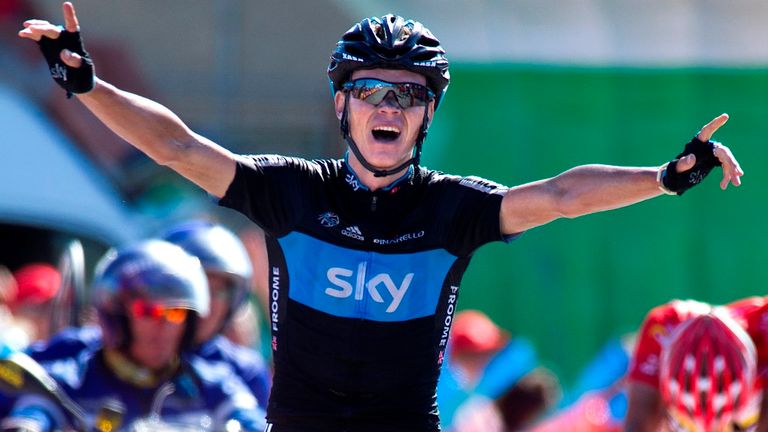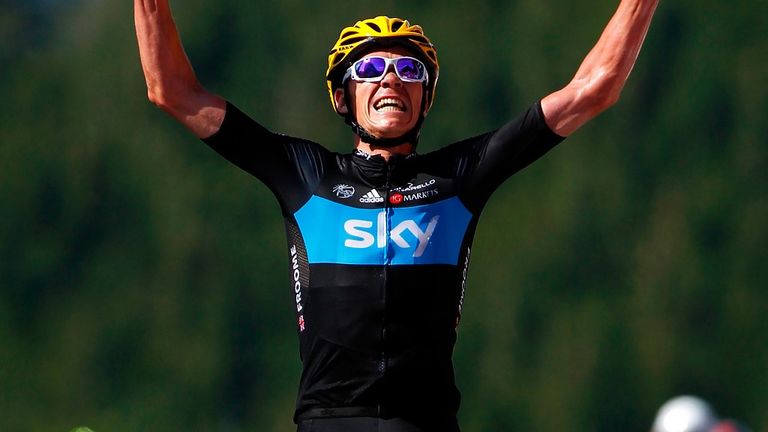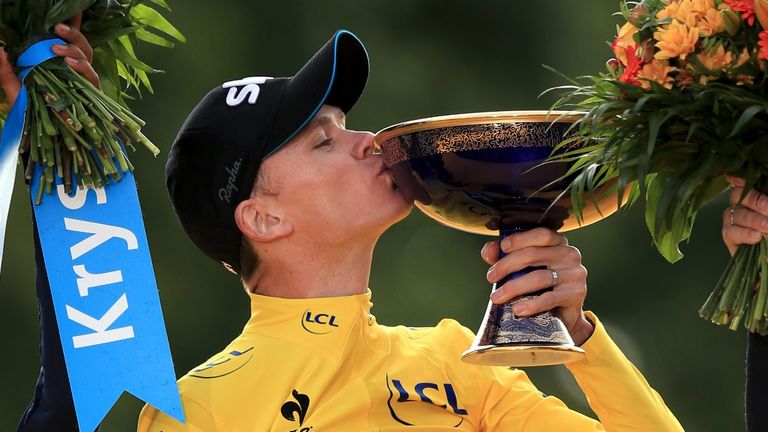Chris Froome: The rough diamond who won the Tour de France twice
Former coaches shed light on Team Sky rider's rapid rise
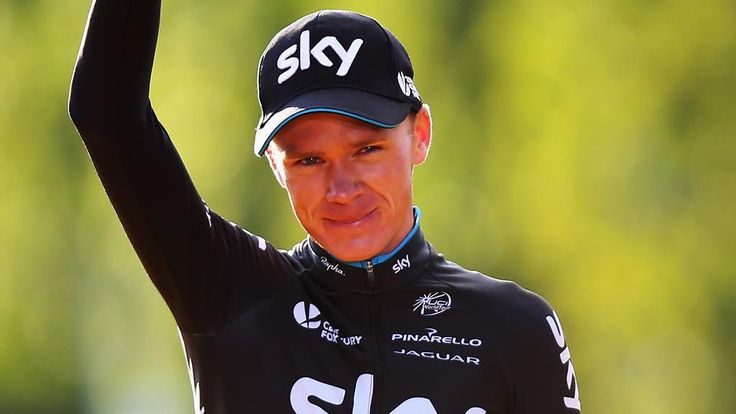
Thursday 10 September 2015 13:36, UK
Nairo Quintana attacks and takes a small lead over the yellow jersey across the summit of the Col de la Croix de Fer. Chris Froome, for once without team-mates in this race, chases him down alone.
He is a better descender than the tiny Colombian so will probably get back to his rear wheel soon enough, but the race leader is nervous and impatient.
He drops off of the saddle, sits on the top tube of his frame – as aerodynamic as he can be – and then starts to pedal, trying to eke yet more speed out of a bike already accelerating past 80kmh.
It’s a difficult technique popularised by the up-and-coming Slovenian rider Matej Mohoric at the world championships a couple of years ago. Any amateur who has ever attempted it will tell you it’s as dangerous as cycling gets.
Within 500m Froome catches Quintana and the panic is over. For now at least, the maillot jaune is safe once more.
Here, perhaps even more than clinching a second Tour de France victory a day later, is the quintessential illustration of how far Froome has come as a bike racer.
Only eight years ago, racing downhill was beyond him, let alone pedalling while sat on his top tube.
"He didn’t even need a descent to fall," says Michel Théze, who coached a very raw Froome when the then 22-year-old arrived at the International Cycling Union’s World Cycling Centre in Switzerland in 2007. "All he needed was a corner. On descents he was even worse because it’s a succession of corners."
Robbie Nilsen, who coached an even younger Froome when he was still racing in South Africa, tells a similar story.
"When we got him over to Europe, his biggest problem was the descents, because we don’t have those long descents that you get in Europe," he explains.
"So he would be able to ride with the best of cyclists on the uphills and the flats, but he would always get dropped on the downhills."
Descending wasn’t the only skill Froome had yet to master back then.
Nilsen first came across him at a local race in 2003 and later signed him to the Hi-Q Academy’s under-23 team, which Froome himself had suggested setting up.
A "rough diamond", as Nilsen describes him at the time, Froome struggled to cope with the complexities of riding in a peloton in particular and there was as much chance of him crashing out of a race than finishing it.
Nevertheless, he showed enough phyiscal promise to be asked in 2007 to join the Konica Minolta team, who were racing in Europe at the time.
Froome also attended the World Cycling Centre while he was there, which is when Théze discovered an athlete who, physiologically, was a match for the great Bernard Hinault.
"He arrived with big physical potential, which he had certainly worked strongly on at home in Kenya," Théze says.
"We did a physiological test on every rider who comes to the world centre. I can confirm that, during all the time that I was at the world centre, he had the biggest physical and physiological potential that came our way.
"All the potential was evident in the very first physical and physiological tests that we could do: enormous. It was enormous. It fell within the norms that we understood of Bernard Hinault in his day. On that level, it was the same.
"As for his technical background, he was very behind compared with athletes of the same level in Europe, and that was his handicap during these years.
“He had never raced in pelotons of 200 riders like he found in Europe. So that was one thing. His size, as well, his manner on the bike, he didn’t have good balance, he didn’t have a very good position.
"But I saw straight away that, once he learned to hold himself better in the peloton and use his physical potential, it would translate into big results."
Thankfully for Théze, Froome was the perfect student, because his physical attributes were matched by his mental strength.
"You could see the determination in the way he behaved," Théze adds. "I knew he had the potential to succeed. He had that determination from the start.
"He had no weakness for training. On that level I have to say he was exemplary. He applied himself to fill every gap that he had to get to a really good level."
In time, Froome would fill the gaps and his subsequent rise to the top of world cycling is now a glorious chapter in both British and African cycling history.
But despite his Tour wins, Vuelta a Espana podiums and Olympic bronze medal, Froome continues to face challenges, only now they are of a different sort.
These days when riding in a peloton, it's not falling off that he has to worry about, but instead being physically abused by spectators who believe he is doping. Théze, however, is quick to quash doubts.
"People were so duped by cycling, but there is a certain progression in his results which will act as proof and speak for him," he says. "I think he will be a part of the new generation of riders, I hope, who will give another image of cycling."
Nilsen is equally defiant and is confident Froome will eventually win over his doubters.
"Chris is an extremely positive person," he explains. "Going into his first Tour de France, for example, his mother passed away shortly before that, and so did a very good cycling friend his, who passed away in an unfortunate accident. Chris used their memory and their spirit to motivate him in that first Tour de France.
"He is doing exactly the same now with all of these unfounded allegations and unfounded criticism. He has turned it into a positive."
As the diamond who has made a living from taking the rough with the smooth, don't be surprised if Froome proves Nilsen right.

